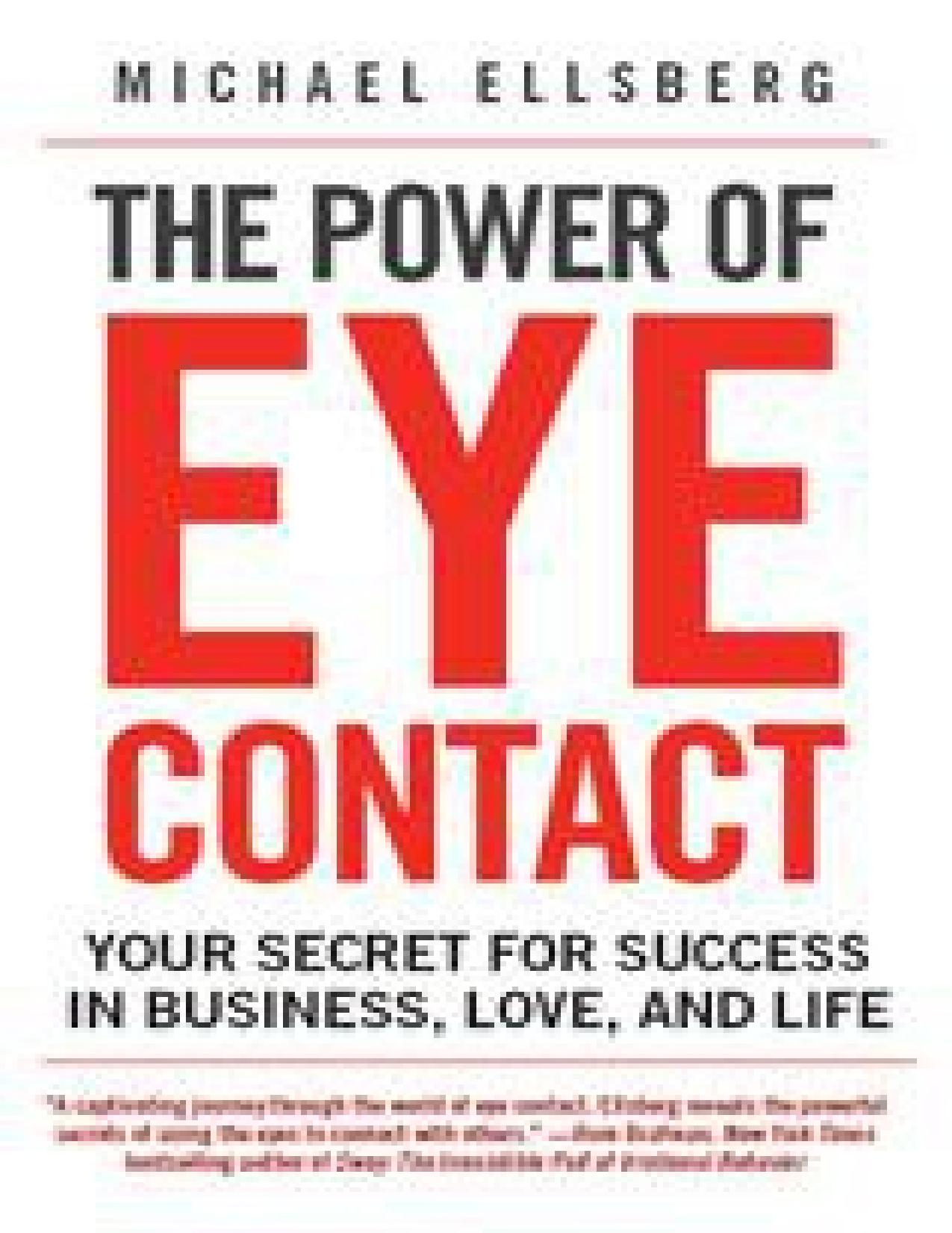The Power of Eye Contact by Michael Ellsberg

Author:Michael Ellsberg
Language: eng
Format: epub, mobi, pdf
Publisher: HarperCollins
Not Too Hot and Not Too Cold
Sales trainer Tony Alessandra, author of sales classics Non-Manipulative Selling and Collaborative Selling (www.alessandra.com), told me a story about a client of his.
ALESSANDRA: I was doing a consulting job for a name-brand big-box retailer. And this company had what they called the “Three Feet Rule.” It meant that if a customer got within three feet of an employee, the employee had to smile, make eye contact, and ask “How can I help you.”
Well, believe it or not, customers had been complaining about the eye contact part of it, actually leaving comments in the comment box. It turned out that every employee interpreted “make eye contact” differently. Some made eye contact and never broke it, drilling a hole through the customer with Superman laser eye beams. Others touched eyes for a millisecond and then never looked back.
All the employees had to be trained in proper eye contact for a salesperson.
ELLSBERG: OK, the million-dollar question. What is proper eye contact for a salesperson?
ALESSANDRA: Intermittent. You definitely want to have solid eye contact. But you should be wary of overdoing it, just as you should be wary of underdoing it.
While you might expect, in a book on eye contact, that I’d advocate making as much eye contact as possible all the time, the one thing I heard again and again from business people and sales professionals is that—in a business context particularly—you want to be just as careful of overdoing eye contact as underdoing it.
Bert Decker (www.bertdecker.com) expresses this point eloquently in You’ve Got to Be Believed to Be Heard: The Complete Book of Speaking . . . in Business and in Life!, one of the most successful and influential books on public speaking ever written. He distinguishes “involvement”—a healthy engagement with the eyes—from “intimacy” or “intimidation,” both of which are the result of too much eye contact.
He writes in his book:
Intimacy and intimidation both involve looking at another person steadily for long periods—say, ten seconds to a minute or more. In business and normal social conversations, both intimacy and intimidation make listeners feel uncomfortable. But over 90 percent of our business and social communications call for involvement. How do you achieve that “just right” level of eye connection that conveys a feeling of involvement? . . . A feeling of involvement requires about five seconds of steady eye contact. That’s about the time we take to complete a thought or sentence.1
Download
The Power of Eye Contact by Michael Ellsberg.mobi
The Power of Eye Contact by Michael Ellsberg.pdf
This site does not store any files on its server. We only index and link to content provided by other sites. Please contact the content providers to delete copyright contents if any and email us, we'll remove relevant links or contents immediately.
| Bookkeeping | Business Mathematics |
| Business Writing | Communications |
| Decision Making | Negotiating |
| Project Management | Running Meetings & Presentations |
| Secretarial Aids & Training | Time Management |
| Training |
Nudge - Improving Decisions about Health, Wealth, and Happiness by Thaler Sunstein(7659)
Deep Work by Cal Newport(6969)
Principles: Life and Work by Ray Dalio(6296)
The Doodle Revolution by Sunni Brown(4715)
Factfulness: Ten Reasons We're Wrong About the World – and Why Things Are Better Than You Think by Hans Rosling(4713)
Eat That Frog! by Brian Tracy(4484)
Thinking in Bets by Annie Duke(4185)
Hyperfocus by Chris Bailey(4087)
Visual Intelligence by Amy E. Herman(3753)
Writing Your Dissertation in Fifteen Minutes a Day by Joan Bolker(3696)
Ogilvy on Advertising by David Ogilvy(3554)
Hidden Persuasion: 33 psychological influence techniques in advertising by Marc Andrews & Matthijs van Leeuwen & Rick van Baaren(3519)
How to Win Friends and Influence People in the Digital Age by Dale Carnegie & Associates(3518)
How to win friends and influence people by Dale Carnegie(3438)
The Pixar Touch by David A. Price(3389)
Schaum's Quick Guide to Writing Great Short Stories by Margaret Lucke(3347)
Deep Work: Rules for Focused Success in a Distracted World by Cal Newport(3183)
Work Clean by Dan Charnas(3080)
The Slow Fix: Solve Problems, Work Smarter, and Live Better In a World Addicted to Speed by Carl Honore(2976)
